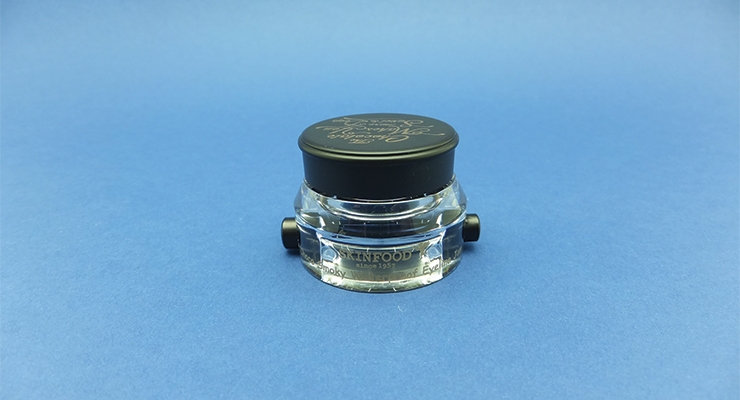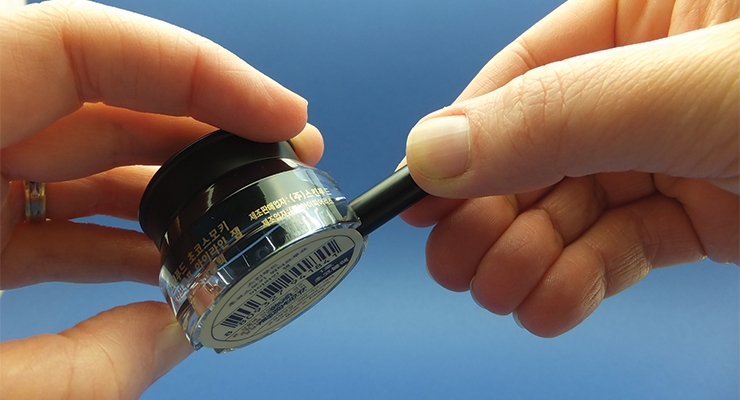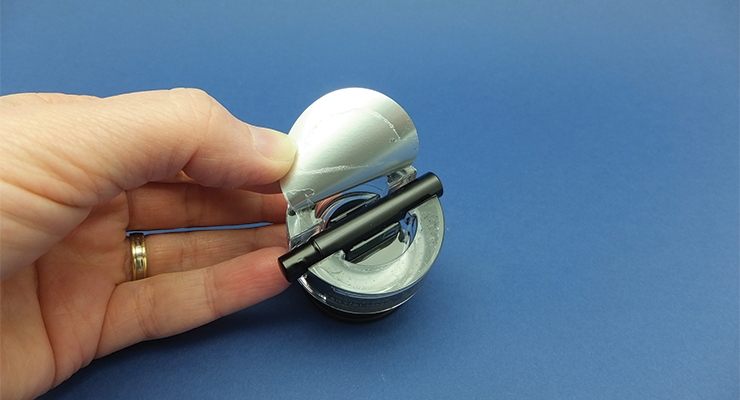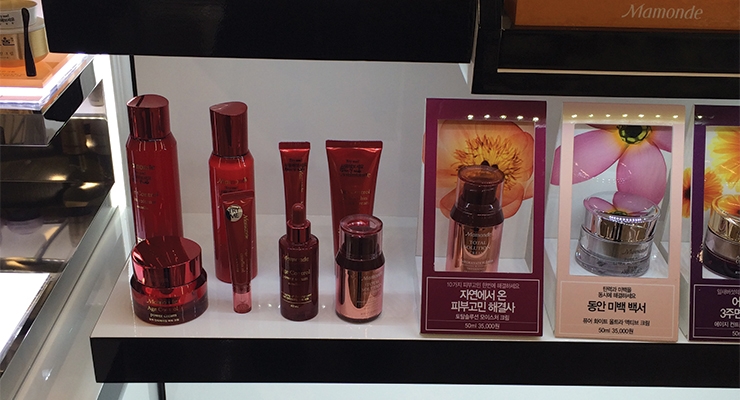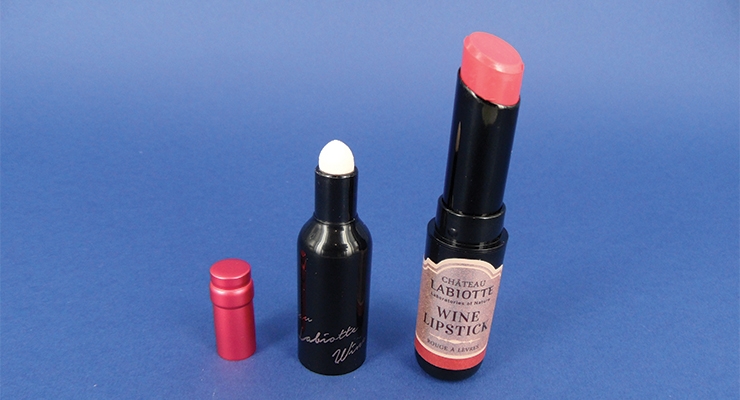Bobbie van der List, Asia Pacific Correspondent03.07.18
Where does the Asian packaging market for fragrances and cosmetics stand?
The big growth can be found in Hong Kong and China particularly. Why is that? Overall there is a global trend for companies to take greater care in packaging to increase sales.
In India, Indonesia and China, the growth is a direct result of the growing purchasing power of consumers. Over the period 2011-2016 one can clearly notice how developed regions were slowing down in growth, whereas developing regions—especially Asia Pacific—were rapidly growing and expanding with cosmetic packaging. This proved especially true for oral care, hair care and skin care packaging, according to Euromonitor.
With the pressure of having to produce innovative and catchy packaging while having to be cost-effective in an ever-increasing competitive market, Hong Kong and Chinese manufacturers managed to stand out by producing lighter and at times “one-off” materials. Another trend that is noticeable in the Asian market is much more straightforward and simple containers, with more emphasis on outer layers for increased appeal.
Aside from this, one must consider the growth of the Indian and Indonesia markets as well, reflecting an overall maturing of the Asian beauty industry. This is especially noticeable in their focus on innovative pack format, sizes and functionality, mostly seen in squeezable plastic tubes, glass and PET, which answers the growing demand from consumers’ desire for convenience. As mentioned in a previous feature about the Japanese packaging approach (see Four Factors Driving Japan's Personal Care Packaging Trends), the land of the rising sun stands out in creating simple, yet brilliant packaging.
What Are the Relevant Trends in Asia?
Overall there are several trends to be noticed in the Asian packaging industry, most notably relating to applicators and sustainability. We spoke to Andrew Streeter, packaging consultant with a specialization in the Asian market, who says: “Applicators will become critical as beauty products become more sophisticated and targeted application becomes a vital norm. Add to this the fact that Asia is a classic on-the-move society, so the facility to have on your person a pack that works on a specific body area in an accurate and easy to do way is vital—easy to say, but challenging and requiring innovation to secure.”
Additionally, Streeter sees the growing relevance of sustainability among Asian consumers of beauty products. “With sustainability, beauty consumers are becoming increasingly aware of their green responsibilities, and expectations climb higher. I see the need for beauty packs to be recyclable and where possible, constructed out of bio-sourced materials, all this without loss of the glamour that’s essential in a beauty pack.”
This green wave is particularly a big driver in the Asian market. For any packaging manufacturing in the beauty industry wanting to be relevant it seems that 2016 and 2017 were the years where the green packaging movement matured in Asia. This is partially caused by the simple fact that domestic companies in Asia are surfing the green wave of environmentally friendly products and thus raised the bar in terms of environmental standards for packaging manufacturers.
Streeter says: “The Asian beauty consumer is becoming increasingly green aware and I do not read it as a fad or passing trend but something that is here to stay. Sustainable packaging must be part of the beauty brand’s specification, it will need to say on the pack somewhere and in doing that, still be a glam pack with all its dynamism for the consumer and distributor alike, plus the brand owner.” He says this is a challenge, yet already some straightforward PET based packs in Asia are stating their recyclability. This is happening in Europe too, for example L’Oréal Botanicals Fresh Care hair treatment in Germany is in a recycled PET material bottle.
“Asia in a way is a driving part of a global environmentally conscious trend of making packaging more recyclable,” says Streeter. “In Asia’s case, it is the rapid growth, increasing wealth, a young dynamic population and the willingness and speed of change that makes it a force in this field to be reckoned with. Yes, it is making a big impact on beauty packaging.”
Then there is South Korea, which is still profiting from the international interest in alphabet creams and air-cushion foundations. This has been a huge factor in the acceleration of growth for the South Korean packaging industry. This is clear to Benjamin Punchard, Mintel’s Global Packaging Insights Director as well, who says, “There is a growing South Korean influence in cosmetics overall, which is making its way into premium. There is a playfulness in packaging that we haven’t seen in personal care. It’s about fun and engaging in an innocent, childlike way. So we’re seeing a lot more vibrant or bubblegum colors, anthropomorphism and language on pack that is less scientific and softer.”
What Do American Companies Need to Know About the Asian Market?
Concretely, Streeter sees several opportunities for American brands wanting to launch their product on the Asian market. As was mentioned before, the Asian market seems to outperform the Western market, or doesn’t it? “Outperform is a big word,” says Streeter, “but I find that they are particular adept in three areas of packaging applications. Firstly, they seem to operate very quickly with new pack concepts moving swiftly from ideas into prototypes and then into production. It may be a more tolerant attitude to risk and failure as well as the logistics of moving a project along swiftly.”
Second, he says, there is a general acceptance to try new pack formats and construction, including taking ideas from other markets and adapting them to a specific product or group; “open innovation in practice really,” such as what he stated earlier regarding fast moving pack innovation and development.
Streeter’s third observation is that interactive packing is becoming more commonplace. “Asia and Japan have a long history of creating packs that physically engage with the consumer, particularly with good functionality,” he says, adding, “now that has naturally moved into smartphones and is moving the concept into online experiences.” This smartphone pack phenomenon is strong across much of Asia, says Streeter, as they are a leader across pack formats as diverse as aluminum cans, labels, flexible packs, and more. A specific need is high-print quality, according to Streeter, and smartphone pack reading drives constant high print standards.
One of the brands that illustrates the trends in beauty packaging is South Korean Skin Food. “It is simple in a way, but the pack is small and portable, made of glass which is recyclable and has strong quality cues,” says Streeter. It is made with precision and is overtly stating “we care for you.” The innovative feature is the applicator brush, which fits into the base and is held in position by a re-sealable label. “It is oh-so-simple,” says Streeter, “but hugely functional and engaging whilst working on-the go.”
Then there is another South Korean skincare and cosmetics brands in which packaging plays a crucial role. “This is a refined dropper,” says Streeter about the Mamonde package. “It is an especially interesting pack because it takes a simple low-cost tube and adds value, shape and dynamism to it and the brand concept with this beautifully crafted dropper,” says Streeter. “The dropper works with precision and adds value in application and emotive qualities. He says there is a high standard of carton decoration with gloss and matte finishes and gold colored inks on a red metallic background.
Finally, Streeter is excited about Chateau Labiotte, another South Korean product. “It is humor, physical presence and versatility all wrapped up in one,” he says. “The small or miniature bottle acts as a lipstick, just pull the top off, but there you can separate the top to reveal a sponge smudge remover, a sort of three-in-one pack with strong emotive cues, and as I said, a bit of humor that is not crude, but subtler than first perceived.”
About the author
Bobbie van der List works as a freelance correspondent in Tokyo. He covers general news, but also follows the packaging industry from close-by. Among other publications, he has worked for Dutch packaging magazine Verpakken Magazine. Before Tokyo Bobbie was stationed in Sweden, where he covered developments in the packaging industry for Dutch language media.
The big growth can be found in Hong Kong and China particularly. Why is that? Overall there is a global trend for companies to take greater care in packaging to increase sales.
In India, Indonesia and China, the growth is a direct result of the growing purchasing power of consumers. Over the period 2011-2016 one can clearly notice how developed regions were slowing down in growth, whereas developing regions—especially Asia Pacific—were rapidly growing and expanding with cosmetic packaging. This proved especially true for oral care, hair care and skin care packaging, according to Euromonitor.
With the pressure of having to produce innovative and catchy packaging while having to be cost-effective in an ever-increasing competitive market, Hong Kong and Chinese manufacturers managed to stand out by producing lighter and at times “one-off” materials. Another trend that is noticeable in the Asian market is much more straightforward and simple containers, with more emphasis on outer layers for increased appeal.
Aside from this, one must consider the growth of the Indian and Indonesia markets as well, reflecting an overall maturing of the Asian beauty industry. This is especially noticeable in their focus on innovative pack format, sizes and functionality, mostly seen in squeezable plastic tubes, glass and PET, which answers the growing demand from consumers’ desire for convenience. As mentioned in a previous feature about the Japanese packaging approach (see Four Factors Driving Japan's Personal Care Packaging Trends), the land of the rising sun stands out in creating simple, yet brilliant packaging.
What Are the Relevant Trends in Asia?
Overall there are several trends to be noticed in the Asian packaging industry, most notably relating to applicators and sustainability. We spoke to Andrew Streeter, packaging consultant with a specialization in the Asian market, who says: “Applicators will become critical as beauty products become more sophisticated and targeted application becomes a vital norm. Add to this the fact that Asia is a classic on-the-move society, so the facility to have on your person a pack that works on a specific body area in an accurate and easy to do way is vital—easy to say, but challenging and requiring innovation to secure.”
Additionally, Streeter sees the growing relevance of sustainability among Asian consumers of beauty products. “With sustainability, beauty consumers are becoming increasingly aware of their green responsibilities, and expectations climb higher. I see the need for beauty packs to be recyclable and where possible, constructed out of bio-sourced materials, all this without loss of the glamour that’s essential in a beauty pack.”
This green wave is particularly a big driver in the Asian market. For any packaging manufacturing in the beauty industry wanting to be relevant it seems that 2016 and 2017 were the years where the green packaging movement matured in Asia. This is partially caused by the simple fact that domestic companies in Asia are surfing the green wave of environmentally friendly products and thus raised the bar in terms of environmental standards for packaging manufacturers.
Streeter says: “The Asian beauty consumer is becoming increasingly green aware and I do not read it as a fad or passing trend but something that is here to stay. Sustainable packaging must be part of the beauty brand’s specification, it will need to say on the pack somewhere and in doing that, still be a glam pack with all its dynamism for the consumer and distributor alike, plus the brand owner.” He says this is a challenge, yet already some straightforward PET based packs in Asia are stating their recyclability. This is happening in Europe too, for example L’Oréal Botanicals Fresh Care hair treatment in Germany is in a recycled PET material bottle.
“Asia in a way is a driving part of a global environmentally conscious trend of making packaging more recyclable,” says Streeter. “In Asia’s case, it is the rapid growth, increasing wealth, a young dynamic population and the willingness and speed of change that makes it a force in this field to be reckoned with. Yes, it is making a big impact on beauty packaging.”
Then there is South Korea, which is still profiting from the international interest in alphabet creams and air-cushion foundations. This has been a huge factor in the acceleration of growth for the South Korean packaging industry. This is clear to Benjamin Punchard, Mintel’s Global Packaging Insights Director as well, who says, “There is a growing South Korean influence in cosmetics overall, which is making its way into premium. There is a playfulness in packaging that we haven’t seen in personal care. It’s about fun and engaging in an innocent, childlike way. So we’re seeing a lot more vibrant or bubblegum colors, anthropomorphism and language on pack that is less scientific and softer.”
What Do American Companies Need to Know About the Asian Market?
Concretely, Streeter sees several opportunities for American brands wanting to launch their product on the Asian market. As was mentioned before, the Asian market seems to outperform the Western market, or doesn’t it? “Outperform is a big word,” says Streeter, “but I find that they are particular adept in three areas of packaging applications. Firstly, they seem to operate very quickly with new pack concepts moving swiftly from ideas into prototypes and then into production. It may be a more tolerant attitude to risk and failure as well as the logistics of moving a project along swiftly.”
Second, he says, there is a general acceptance to try new pack formats and construction, including taking ideas from other markets and adapting them to a specific product or group; “open innovation in practice really,” such as what he stated earlier regarding fast moving pack innovation and development.
Streeter’s third observation is that interactive packing is becoming more commonplace. “Asia and Japan have a long history of creating packs that physically engage with the consumer, particularly with good functionality,” he says, adding, “now that has naturally moved into smartphones and is moving the concept into online experiences.” This smartphone pack phenomenon is strong across much of Asia, says Streeter, as they are a leader across pack formats as diverse as aluminum cans, labels, flexible packs, and more. A specific need is high-print quality, according to Streeter, and smartphone pack reading drives constant high print standards.
One of the brands that illustrates the trends in beauty packaging is South Korean Skin Food. “It is simple in a way, but the pack is small and portable, made of glass which is recyclable and has strong quality cues,” says Streeter. It is made with precision and is overtly stating “we care for you.” The innovative feature is the applicator brush, which fits into the base and is held in position by a re-sealable label. “It is oh-so-simple,” says Streeter, “but hugely functional and engaging whilst working on-the go.”
Then there is another South Korean skincare and cosmetics brands in which packaging plays a crucial role. “This is a refined dropper,” says Streeter about the Mamonde package. “It is an especially interesting pack because it takes a simple low-cost tube and adds value, shape and dynamism to it and the brand concept with this beautifully crafted dropper,” says Streeter. “The dropper works with precision and adds value in application and emotive qualities. He says there is a high standard of carton decoration with gloss and matte finishes and gold colored inks on a red metallic background.
Finally, Streeter is excited about Chateau Labiotte, another South Korean product. “It is humor, physical presence and versatility all wrapped up in one,” he says. “The small or miniature bottle acts as a lipstick, just pull the top off, but there you can separate the top to reveal a sponge smudge remover, a sort of three-in-one pack with strong emotive cues, and as I said, a bit of humor that is not crude, but subtler than first perceived.”
About the author
Bobbie van der List works as a freelance correspondent in Tokyo. He covers general news, but also follows the packaging industry from close-by. Among other publications, he has worked for Dutch packaging magazine Verpakken Magazine. Before Tokyo Bobbie was stationed in Sweden, where he covered developments in the packaging industry for Dutch language media.

